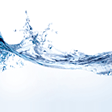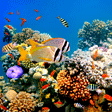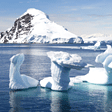- Home >
- Our Actions >
- Ambassador report
3
Comments
12,000 Pieces Of Micro-plastic Per Liter Of Arctic Ice |
|---|
|
by Rahul Kumar Patel | 28-04-2018 10:31
|
|
Scientists have found enormous amounts of plastic trapped in the Arctic Sea ice, raising concerns regarding its impact on marine sea life and human beings. As reported by The Guardian, up to 12,000 pieces of microplastic particles were found per litre of sea ice, which is three times more than the last research. The study was conducted after collecting plastic from five different regions in the Arctic Ocean. Researchers at the Alfred Wegener Institute, Helmholtz Centre for Polar and Marine Research (AWI) found remnants of nylon, paint, polyester and cellulose acetate – a material used to make cigarette filters, in all the samples they collected. Say no to plastic Amid the crisis of plastic pollution growing in the world, this comes as worrying news. Experts have warned that this can lead to permanent contamination of the Earth. Previously, research indicated that almost 1 ton of microplastic had frozen in the Arctic sea over decades. One of the researchers said that the worrying part is that the particles are less than 11 micrometres in width. “That’s roughly one-sixth the diameter of a human hair, and also explains why we found concentrations of more than 12,000 particles per litre of sea ice – which is two to three times higher than what we’d found in past measurements.”One of the study’s authors, Dr Ilka Peeken said, “The high microplastic concentrations in the sea ice can not only be attributed to sources outside the Arctic Ocean. Instead, they point to local pollution in the Arctic.”She further added, “No one can say for certain how harmful these tiny plastic particles are for marine life, or ultimately also for human beings.”One researcher concluded that the presence of polyethene might be from the Great Pacific Garbage Patch. He also thinks that the nylon and paint come from fishing and increased shipping. As we all know by now that plastic is carcinogenic. It takes a lot of time to disintegrate. A research also concluded that out of all the plastic created only 10% of it is recycled. Our tremendous attraction to plastic, coupled with an increasing over-consuming, discarding, littering and thus polluting, has become a combination of lethal nature. Marine life has been compromised because of the presence of plastic in oceans. Stray animals like cows, dogs consume plastic and die. It is time to say no to plastic. Source- The Logical Indian, The Guardian |
|
|










 Previous : Online slogan writing competit...
Previous : Online slogan writing competit...









3 Comments
Greeting rahul
I hope you are doing well
Nicely written
Thank you so much for this report.
Keep writing
Green cheers!
Regards
Basanta
Posted 23-03-2020 11:03
Hello Rahul, it seems like minute plastic subjects have had a long journey from people's hands to Arctic area. As they are really tiny and get diminished in their sizes when they get separated out from original product, it is really hard to get them together.
That's why we need to build up recycle progression and factories to manage plastic wastes before they get into sea and ocean!
What else or technology can be existent for us to keep plastic waste in our region, not into Arctic land?
Posted 01-05-2018 01:39
Hello Rahul
Plastics are used everywhere nowadays. It would be impossible to spend a day without any plastic around you. However the problem of plastic is that they are used too much in disposable products. Also as the report says it is very hard to eliminate the micro plastics especially accumulating in our sea environments. I hope more technology could be developed to solve this problem.
Thanks for the report!
Posted 28-04-2018 23:16